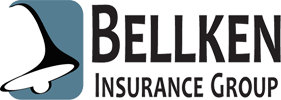Why Is Builder’s Risk Insurance Getting More Expensive in Florida, and What Can Contractors Do?
See How We're Different
or call us: 954-233-0733
In recent years, Florida has experienced a significant rise in the cost of builder's risk insurance, leaving many contractors and developers concerned about their project budgets. This insurance, essential for protecting construction projects from various risks, has become increasingly expensive due to a combination of factors. Understanding these factors and exploring potential solutions can help contractors navigate this challenging landscape.
The Current State of Builder’s Risk Insurance in Florida
Builder’s risk insurance provides coverage for buildings under construction, protecting against losses due to fire, theft, vandalism, and certain weather events. In Florida, where construction is booming, the market for this insurance has seen notable fluctuations. The current state of builder's risk insurance reflects broader trends in the insurance industry and specific challenges faced by Florida's unique environment.
Rising Premiums and Deductibles
One of the most immediate impacts of the changing insurance landscape is the rise in premiums. Many contractors have noticed that not only are premiums increasing, but deductibles are also becoming higher. This combination can strain budgets, particularly for smaller contractors who may not have the financial resilience to absorb these costs. The increase in premiums is often attributed to heightened risk assessments by insurers, driven by recent catastrophic events in the region. In addition, many contractors are now being encouraged to invest in risk mitigation strategies, such as advanced security systems and weather-resistant materials, which can add to their upfront costs but may ultimately save them money in insurance premiums over time.
Increased Risk Factors
Florida's geographical location makes it particularly susceptible to natural disasters such as hurricanes, floods, and severe storms. The frequency and intensity of these events have been on the rise, prompting insurers to reassess their risk models. As a result, many companies are adjusting their pricing structures to account for the heightened risk, leading to increased costs for builders and contractors. Additionally, the ongoing impacts of climate change are further complicating risk assessments, contributing to a more volatile insurance market. The unpredictability of weather patterns means that builders must also consider the timing of construction projects, as delays can lead to increased exposure to these risks. This uncertainty can create a challenging environment for project planning and budgeting, making it essential for contractors to stay informed about both local weather forecasts and the evolving insurance landscape.
Market Competition and Capacity Issues
While competition among insurers can often lead to lower prices, the current market dynamics in Florida are quite different. Many insurers are pulling back from the builder's risk market due to the increased risks associated with construction in the state. This reduction in capacity means fewer options for contractors, which can drive up prices as demand outstrips supply. The limited availability of coverage options has left many contractors feeling vulnerable and uncertain about their insurance choices. Furthermore, as some insurers exit the market, those that remain may impose stricter underwriting criteria, requiring builders to demonstrate robust safety and risk management practices. This shift not only affects pricing but also necessitates that contractors invest more in compliance and risk management initiatives, which can be a significant burden, especially for smaller firms trying to navigate these challenges without the same resources as larger competitors.
Understanding the Factors Behind Rising Costs
To effectively address the rising costs of builder's risk insurance, it is crucial to understand the underlying factors contributing to these increases. Several interconnected elements play a role in shaping the current insurance landscape in Florida.
Natural Disasters and Climate Change
Florida's vulnerability to natural disasters is a primary driver of insurance costs. The state has faced numerous hurricanes, tropical storms, and flooding events in recent years, leading to significant claims and losses for insurers. The increasing frequency and severity of these events have prompted insurers to adopt a more cautious approach, resulting in higher premiums for builders. Furthermore, climate change is expected to exacerbate these risks, leading to even more uncertainty in the insurance market. As sea levels rise and weather patterns shift, the potential for catastrophic events increases, prompting insurers to reassess their risk models and pricing strategies. This heightened risk perception not only affects current insurance rates but also influences future investments in infrastructure and construction practices, as builders seek to mitigate risks associated with unpredictable weather phenomena.
Regulatory Changes and Legal Environment
Changes in regulations and the legal environment can also influence builder's risk insurance costs. Florida has seen shifts in construction-related laws, including those related to liability and safety standards. These changes can increase the potential for claims, prompting insurers to raise premiums as a precautionary measure. Additionally, the legal landscape surrounding construction disputes can create further uncertainty, leading insurers to adopt a more conservative stance. For instance, the introduction of stricter building codes aimed at enhancing safety and resilience can lead to increased compliance costs for builders, which may ultimately be passed on to consumers in the form of higher insurance premiums. Moreover, the rise of litigation related to construction defects and delays can further strain the insurance market, as insurers brace for potential payouts in an increasingly litigious environment.
Economic Factors and Inflation
The broader economic environment also plays a role in shaping insurance costs. Inflationary pressures can increase the cost of materials and labor, which, in turn, affects the overall value of construction projects. Insurers must consider these rising costs when determining premiums, leading to higher rates for builders. As the economy continues to fluctuate, contractors may find themselves grappling with the dual challenges of rising project costs and insurance premiums. Additionally, the labor market's volatility can impact the availability of skilled workers, further driving up wages and project timelines. This situation creates a ripple effect, as delays in construction can lead to increased insurance costs due to prolonged exposure to risks. Builders may need to adopt innovative strategies, such as investing in technology and project management tools, to streamline operations and mitigate these rising costs, ensuring that they remain competitive in a challenging market.
What Contractors Can Do to Mitigate Rising Costs
While the rising costs of builder's risk insurance present significant challenges, contractors can take proactive steps to mitigate these expenses. By adopting strategic approaches, contractors can better navigate the complexities of the insurance market and protect their projects.
Shop Around for Coverage
One of the most effective strategies for contractors is to shop around for insurance coverage. With the market becoming increasingly competitive, it is essential to compare quotes from multiple insurers. Engaging with a knowledgeable insurance broker can provide valuable insights into the best options available, helping contractors find coverage that meets their needs at a reasonable price. Brokers can also assist in negotiating terms and conditions that may lead to more favorable premiums. Furthermore, contractors should not hesitate to ask insurers about discounts for bundling policies or for implementing specific safety measures, as these can lead to significant savings over time.
Implement Risk Management Practices
Investing in robust risk management practices can significantly reduce the likelihood of claims and, consequently, insurance costs. Contractors should prioritize safety protocols, employee training, and quality control measures to minimize risks on the job site. By demonstrating a commitment to risk management, contractors may be able to negotiate lower premiums with insurers, as they present a lower risk profile. Additionally, maintaining detailed records of safety incidents and training sessions can serve as evidence of a contractor's proactive approach to risk management, further strengthening their position during negotiations with insurance providers.
Consider Alternative Coverage Options
Exploring alternative coverage options can also help contractors manage rising costs. Some contractors may benefit from joining a group insurance program or a construction association that offers collective coverage. These programs can provide access to more favorable rates and terms, as the risk is spread across multiple members. Additionally, contractors should consider whether they can self-insure certain risks, which may result in lower overall insurance costs. It's also worth investigating specialized insurance products tailored to specific types of projects or trades, as these can sometimes offer better coverage at a lower price point compared to standard policies. By staying informed about the latest trends and offerings in the insurance market, contractors can make more educated decisions that align with their financial goals and project needs.
The Future of Builder’s Risk Insurance in Florida
The landscape of builder's risk insurance in Florida is likely to continue evolving in response to changing environmental, economic, and regulatory factors. As contractors face rising costs, staying informed about industry trends and emerging risks will be essential for long-term success.
Adapting to Climate Change
As climate change continues to impact the frequency and intensity of natural disasters, insurers will likely adjust their pricing models accordingly. Contractors must remain vigilant and adapt to these changes by incorporating sustainable practices into their projects. This not only helps mitigate risks but also positions contractors as responsible builders in a changing market. Furthermore, the integration of green building materials and energy-efficient designs can lead to reduced insurance premiums, as insurers recognize the lower risk associated with environmentally conscious construction methods. By proactively addressing climate-related challenges, contractors can enhance their reputation and appeal to a growing base of eco-aware clients.
Embracing Technology and Innovation
Technology is playing an increasingly vital role in the construction industry, and embracing innovative solutions can help contractors reduce risks and improve efficiency. From using advanced project management software to implementing drone technology for site inspections, contractors can leverage technology to enhance their operations. By demonstrating a commitment to innovation, contractors may find themselves in a better position to negotiate favorable insurance terms. Additionally, the rise of Building Information Modeling (BIM) allows for more accurate project planning and risk assessment, enabling contractors to identify potential issues before they escalate. As the industry continues to evolve, those who harness the power of technology will likely stand out in a crowded marketplace.
Building Strong Relationships with Insurers
Establishing and maintaining strong relationships with insurers can be a valuable asset for contractors. Open communication and transparency can foster trust, making it easier to navigate challenges and negotiate terms. Contractors who actively engage with their insurers and demonstrate a commitment to risk management may find themselves better positioned to secure favorable coverage in an increasingly competitive market. Moreover, participating in industry forums and networking events can provide contractors with insights into insurer expectations and emerging trends. By cultivating these relationships, contractors not only enhance their chances of obtaining better insurance terms but also gain access to valuable resources and support that can aid in risk mitigation and project success.
Conclusion
The rising costs of builder's risk insurance in Florida present a complex challenge for contractors. Understanding the factors driving these increases, from natural disasters to economic pressures, is essential for navigating the insurance landscape. By adopting proactive strategies, such as shopping around for coverage, implementing risk management practices, and embracing technology, contractors can mitigate rising costs and protect their projects.
As the construction industry continues to evolve, staying informed about emerging trends and building strong relationships with insurers will be crucial for long-term success. By taking these steps, contractors can not only weather the current storm of rising insurance costs but also position themselves for future growth in a dynamic and challenging market.








